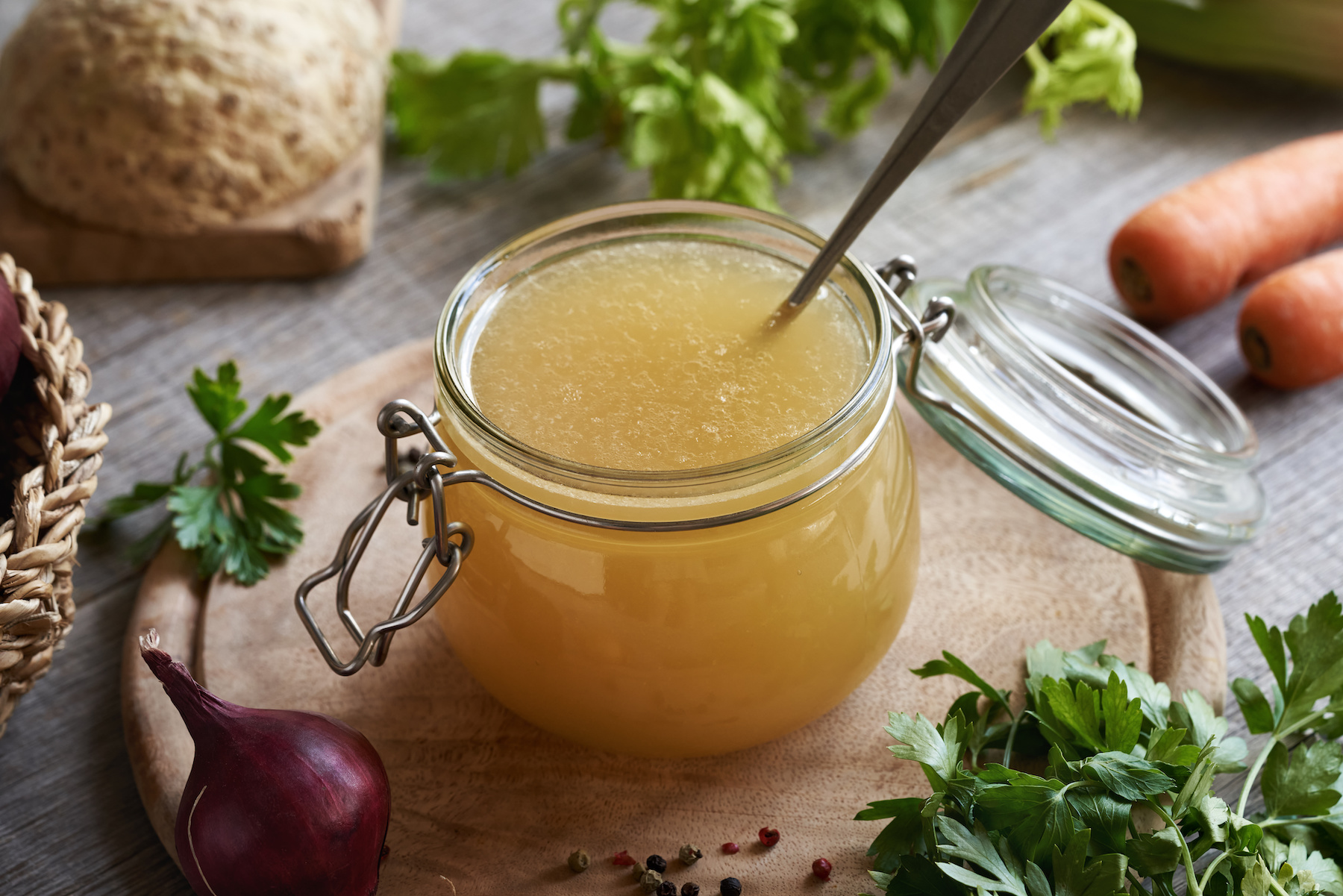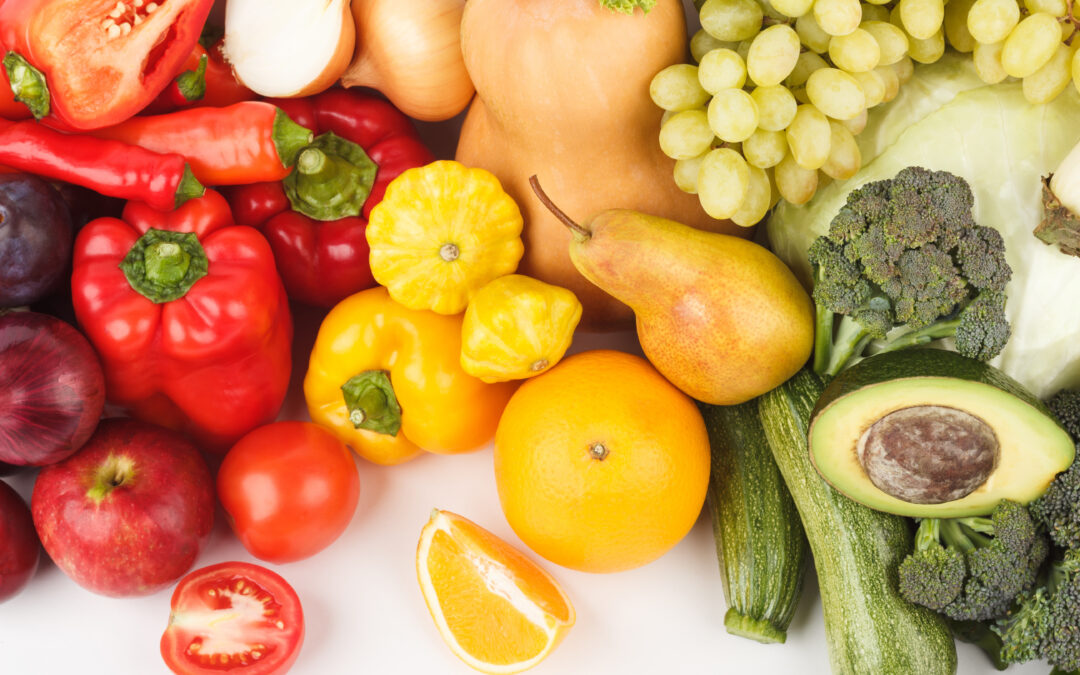Bone broth is an old food that is currently enjoying a huge revival of popularity. This is thanks to its nutritional density, its reputation as a healing food for those aiming to repair or maintain health and, last but not least, its ability to add some serious yum to even a simple dish.
The broth is made by cooking bones in water with a small amount of an acidic food such as apple-cider vinegar or lemon juice. Select vegetables, herbs and spices are usually added to further augment the nutrition and flavour of the finished product.
After a cooking period of between 4 and 40 hours, the liquid is strained from the bones and food-remains, leaving a fragrant, flavourful stock.
A classic folk treatment for colds and flu (one permutation is fondly known as Jewish Penicillin), broth has also been used historically for problems affecting connective tissues such as the gastrointestinal tract, the joints, the skin, the lungs, the muscles and the blood.
More recently, bone broth has become a favourite for those with chronic, inflammatory or autoimmune conditions and for others who need to bulk out the nutrient density of their food for example during pregnancy or for postpartum recovery.
Bone broth contains many minerals and amino acids, required for bone formation (as they are, obviously, leeched from the bones themselves during the cooking process), for tissue repair and that directly inhibit inflammation.
These include calcium, magnesium, phosphorus, glycine and proline.
The addition of vegetables, herbs and spices adds such nutrients as sulphur, which helps to support healthy detoxification and various phytonutrients that further add to the anti-inflammatory and anti-oxidant capacity of this superfood.
I recommend making a big batch of broth once per week, and consuming at least 1 cup per person per day. There are infinite ways that you can incorporate broth into your diet.
Here are some of my favourite uses for broth:
- Add ¼ teaspoon or so of smoked sea salt and drink from a mug. So good when I’m cold and / or tired, or as part of my breakfast.
- Turn it into soup. There are a thousand ways that you could do this, and you could make a different soup every day, just by changing the meat, veggies and other herbs and spices you add. Some of my favourites include:a. Simple chicken soup: Heat broth in a saucepan, add some finely chopped celery, carrot and a little rosemary. Simmer for a few minutes until the veggies are starting to soften, then add some chicken. You can either add precooked chicken and heat, or add raw chicken pieces and gently poach. Season to taste. Delicious and about 15 minutes from start to finish.b. I like to make a ‘Thai’ version of chicken soup by adding veggies, mushrooms and chicken, plus coconut milk and lemongrass. Sometimes I add a little red or green curry paste.c. Greens soup. Chop and onion and some garlic and heat them until the onion is translucent. Add broth and leaves of your choice. I love kale, spinach, bok choi and swiss chard. Cook until the leaves are quite soft and then puree until smooth. Add a little salt at the end if required.
- Use it as a base for gravy. Add to the pan with roast meat drippings and prepare your gravy as usual. It’s also fantastic in tomato-based sauces, such as simple marinara sauce or as a base for curries and stews.
- Cook any vegetables, lentils, beans or rice in it to increase the flavour and nutrient density of the meal. I made a fantastic pasta sauce recently, using roast butternut squash, 1 cup of broth and 1 red onion caramelised in coconut oil. I just added these three ingredients together, pureed until smooth and added crispy bacon pieces at the end. Super simple and full of flavour.
My dear friend, nutritionist and chef Sueson Vess has absolutely perfected the Bone Broth recipe. Sueson is well known for recipes that both taste amazing, and are amazing for you. She really focuses on superlative flavour, using ingredients that are packed full of great nutrition to support people with autoimmune diseases, the autistic spectrum and those fighting or recovering from cancer. Or, just people who love to eat really great food.
Without further ado, here is Sueson’s bone broth recipe.
Method for Making Bone Broth
Ingredients:
Large whole chicken (can also use any raw organic bones you like)
3 carrots, chopped into quarters
2 leeks, chopped
2 onions, quartered
2-3 stems of celery, chopped
5 or 6 juniper berries or 3-4 cloves
2 cinnamon sticks
1 tsp turmeric
2-3 pieces of dried kombu
Large handful of parsley
1⁄4 cup organic apple cider vinegar or fresh lemon juice
Cut a whole chicken into pieces. Separate the breast and thighs, and set aside. Disassemble thoroughly and use a cleaver to hack the leg and wing bones, to expose the marrow.
In a soup pot, place carrots, onions, leeks, celery, kombu, bay leaves, parsley, cloves or juniper, turmeric and cinnamon.
Place the bones, skin and flesh on top, and then pour cold filtered water to cover it all and add the vinegar or lemon to this.
Lastly, place the breast and thighs on top to gently poach.
Turn the heat on to low, and leave to heat and simmer.
Total cooking time is a minimum 4-5 hours although you can leave it much longer.
Turn the breast and thighs over at about 1 hour and they will be done after about 2 hours.
In the first hour, you will need to skim the scum that forms on the surface in order to obtain a clear broth. Keep doing this from time to time.
When it’s done. Allow to cool a little and then strain through a sieve into a large glass bowl. Then strain again through a smaller sieve into wide necked glass jars. If you’re planning to freeze, leave a good amount of room in the top of the jar to allow for expansion of the liquid, so your jars don’t break.
Discard everything except the broth and the poached meat. Cool the broth and then store in the fridge and / or freezer.
The vinegar or lemon juice is important. Do not skip or forget this ingredient as the acid facilitates the nutrients leeching out of the bones and cartilage and into the broth.
Other cooking options include using a crockpot on a low setting overnight – 8-10 hours, or using a pressure cooker for 4-5 hours, which is equivalent to cooking for much longer using other methods.
If you wish to remove the fat for use in gravy, use a gravy separator while the broth is warm, or skim the fat off the top once refrigerated.
Cold broth will gel when sufficient gelatin is present. Broth may be frozen for months or kept in the refrigerator for about 5 days.
You can use cooked bones for this as well, saving all the bones from your meals through the week to add to the weekly broth. I sometimes like to roast 2 chickens on a weekend, and I use the two sets of leftover bones as the base for my broth – just adding in any other bones I’ve saved in my freezer and some extra wings for the cartilage nutrients.
You can brown red-meat bones in the oven before using them to make broth or use them raw. Just pop them in a roasting pan in the oven for an hour, turning after 30 minutes.






